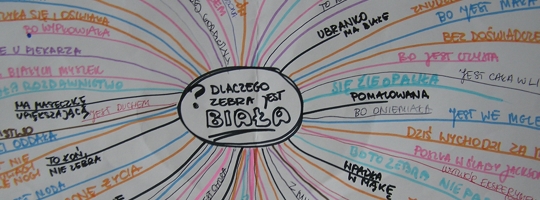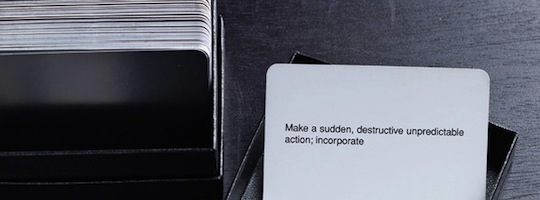Organised Chaos
So much to do, so little time to actually do it in. Twelve weeks may look like a long time when you see it on a calendar but, when you're in the thick of it... not so much. I feel like I should be pushing forward with my project more than I have been to date. As a result that's exactly what I'm going to do, step up the pace with my Logs, and actually start adding content into the other modules.
Most of that is irrelevant to this post though. Today I'm here to talk about ideas and, more specifically, idea generation.
The Importance of Ideas
Ideas are important. Without them nothing is new or, perhaps more importantly in this day and age, nothing is unique. When it comes to a product or a project it's very rarely possible to create something new, but there is always some approach that can be taken to making something memorable.
Making something memorable is important for numerous reasons. Life is fleeting, and every moment you don't remember is a moment that you can't get back. In addition to this, those of us who seek to be designers also need to make the things we produce stand out, be unique and be memorable. The ultimate goal of a designer is to be able to live off of the skills he has developed and honed and, to do this, the work they produce needs to stand out and be memorable. If it isn't why would anyone even consider hiring them?
As such, it's important that we always strive to come up with great ideas, different ideas and try new things. It might not always work out, and not everything we think up will necessarily be useful in the long run but, if we don't, we run the risk of deciding what we produce is 'good enough' when we should always be pushing ourselves to be better.
Idea Generation
Always trying to generate ideas helps us do this. By refusing to look at something with a pre-existing viewpoint we are better able to create something that is really ours and not just going with the flow that everyone else follows. Not that doing so is necessarily a bad thing, so long as you have a reason to. Ultimately thinking forms an important part of the (or at least my) design process. As with everything else we work on or with, there are tools we can make use of to make things easier.
- Brain Storming & Mind Mapping
- Oblique Strategies
- Mood Boards
Brain Storming & Mind Mapping

Brain Storming & Mind Mapping are quite closely tied, as each involve something of a quick fire round of getting ideas. This can be useful as there will typically be some little pieces of gold nested in amongst the large quantity of useless ideas. Mind Mapping, as was demonstrated in our last lecture, allows us to create a wide range of ideas that can then be combined in ways we hadn't come up with, like combining lightning and chocolate to create shockolate 1.
Oblique Strategies

Oblique Strategies are a new (to me) method of helping you approach a problem as it defines a role for you to use as an approach to the problem at hand. This helps cut out decisions that might otherwise slow you down and also provides you with a specific (and different) perspective to approach things from than your own. I've not had much of of an opportunity to play around with this approach but, as with most tools, it's always handy to have them on hand because you never know when you might need them.
Mood Boards
Mood Boards are another tool to help generate ideas. Rather than spark idea generation by writing down ideas as you have them, or by using a card for guidance, mood boards help generate ideas using visual input. You gather images related to the topic at hand, or various aspects of the topic at hand, and use the imagery gathered to help generate ideas for concepts you can use with the project.
Don't Limit Yourself
As designers we can quite easily get set in a path of making things a certain way, doing things in a certain order and, ultimately, looping through the same processes, same ideas, again and again. Whilst this is quite often enough to get by, it does nothing to help you stand out. The above are tools to help avoid that, but there are always other ways to generate ideas.
Don't limit yourself to a single process or a single way to get things done. There are certain tools that are best suited to certain jobs, something that is as true in a digital landscape as well as an analogue one. You might not always need to use the tools you collect, but it's always a good idea to have tools that you may need in the future.
-
Powerthirst is an energy drink with a rather wide selection of YouTube videos, many of which are quite amusing ↩